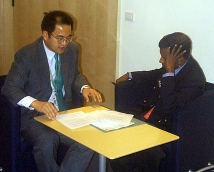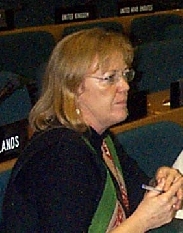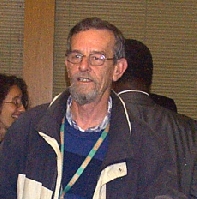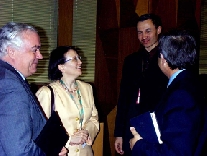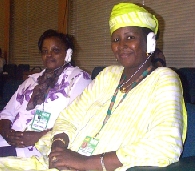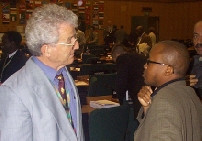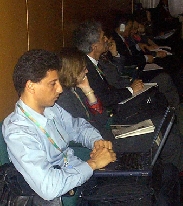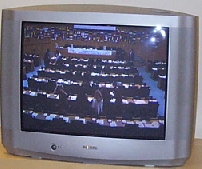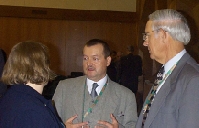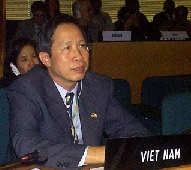Version
française:
Bulletin des
Négociations
de la Terre
|
ENB summary reports |
HTML |
PDF* |
TXT |
|
SUMMARY-1 |

|
 |

|
|
SUMMARY-2 |
 |
 |
 |
|
|
 Visit
the Secretariat of Visit
the Secretariat of
the United Nations Convention to Combat Desertification
|
|
 Visit
the First Session of the Committee for the Review of the
Implementation of the Convention (CRIC1) Visit
the First Session of the Committee for the Review of the
Implementation of the Convention (CRIC1)
|
|
 *To
view PDF files, you will need the free Adobe Acrobat Reader *To
view PDF files, you will need the free Adobe Acrobat Reader
|
|
First Session of the Committee for the Review
of
the Implementation of the Convention (CRIC1)
Rome,
Italy |
11 - 22 November 2002
Friday
15
|
|
 |
Delegates met in morning and afternoon sessions, to continue the
thematic review, with case study presentations from Africa, Northern
Mediterranean and Central and Eastern European Regions and other
Affected Country Parties, and Asian. |
| |
|
| |
|
|
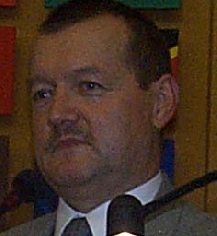 |
Ryszard
Debicki (Poland) said that in relation to land degradation, Poland is
impacted by catastrophic droughts and floods, water scarcity and poor
water quality, soil loss, and land degradation. He called for
adequate, reliable and competent responses to CCD implementation and
suggested further activities to integrate land degradation measures
into NSSDs. |
| |
|
| |
|
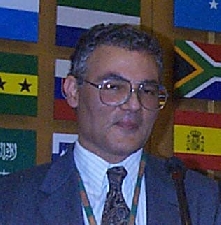 |
Avertano Role (Malta) said that the development of an integrated
Coastal Area Management Programme (CAMP), involving national
institutions and international partners such as UNEP, has secured
funds for the realization of a key pilot project focusing on
integrated water resource management and desertification control in
Malta. Highlighting the pilot project's successes, he stressed the
need for additional funds to establish baseline data, to apply
experiences gained from the pilot project in other parts of Malta, and
to carry out joint projects with other small island States. |
| |
|
 |
Salif Kanouté (Mali) noted the
strengths of Mali's programmes including: the consistent support of a
lead donor state; a permanent institutional framework; effective
coordination; and the participation of civil society. He highlighted
weaknesses in the process including: unstable government structures;
insufficient financial resources; difficulties harmonizing work among
different actors; inadequate high-level political support; and
difficulties providing access to information in impoverished areas. |
| |
|
 |
Mohamed Ismail (Tunisia)
commenced his country's case study by reviewing the degree of
desertification in Tunisia, the national funds that have been
established to combat desertification, and the results of partnerships
between national and international partners to address land
degradation. He concluded that: the NAP is a unifying framework for
environment programmes and the CCD; that on-going consultation with
development partners is crucial; and consistent and substantial
support is needed to facilitate the implementation of the CCD at the
national, subregional and regional levels. |
| |
|
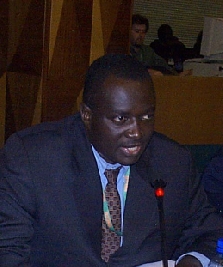 |
Stephen Muwaya (Uganda) outlined efforts to mobilize resources for the
NAP, including: involvement of the Ministry of Finance; increasing
budget allocations to environment and natural resource management;
establishing a plan for resource mobilization; mainstreaming NAP
issues into national development frameworks; promoting synergies with
related environmental conventions and increasing their integration
into national planning processes; and the initiation of a dialogue on
a partnership framework for implementation of the NAP. |
| |
|
 |
Pham Minh Thoa (Vietnam) highlighted the role of forestry in combating
desertification. She identified several challenges for forest
management, including: increasing the involvement of local
stakeholders; augmenting financial resources; improving coordination
among projects; and expanding operational policy frameworks. |
| |
|
 |
Matt McIntyre (South Pacific Regional Environment Programme)
highlighted the region's main causes for land degradation and stressed
the need for harmonized legislation, increased funding, and enhanced
information, coordination and cooperation with the CCD Secretariat. |
| |
|
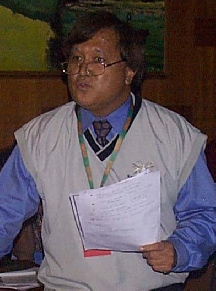 |
David Fong Sooialo (Samoa) said human factors (deforestation and
settlements on arable land) and natural factors (El Nino cycles and
tropical cyclones) are exacerbating the causes land degradation in the
South Pacific. |
| |
|
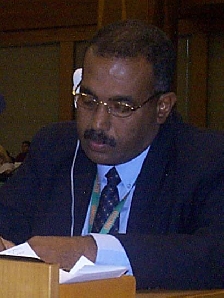 |
Identifying obstacles to sustainable land management, Inoke Ratukalou
(Fiji) suggested agro-forestry, slope farming, watershed management
and geographical information systems analysis as important means to
combat desertification. |
| |
|
| |
|
Links
|
 Text
of the convention and useful information
Text
of the convention and useful information
 CCD information on
desertification and the Convention
CCD information on
desertification and the Convention
 Official
Documents of the First Session of the CRIC
Official
Documents of the First Session of the CRIC
 Press release on the CRIC
Press release on the CRIC
 CRIC1 - Tentative
Schedule
CRIC1 - Tentative
Schedule
 Adoption of the Agenda and Organization of Work
Adoption of the Agenda and Organization of Work
 Arrangements for the First Session of the Committee for the Review of the
Implementation of the Convention
Arrangements for the First Session of the Committee for the Review of the
Implementation of the Convention
 Linkages
desertification issues page and
COP-5
summary report.
Linkages
desertification issues page and
COP-5
summary report.
| Linkages
home | IISDnet | E-mail
|
©
2002, IISD. All rights reserved.
|















